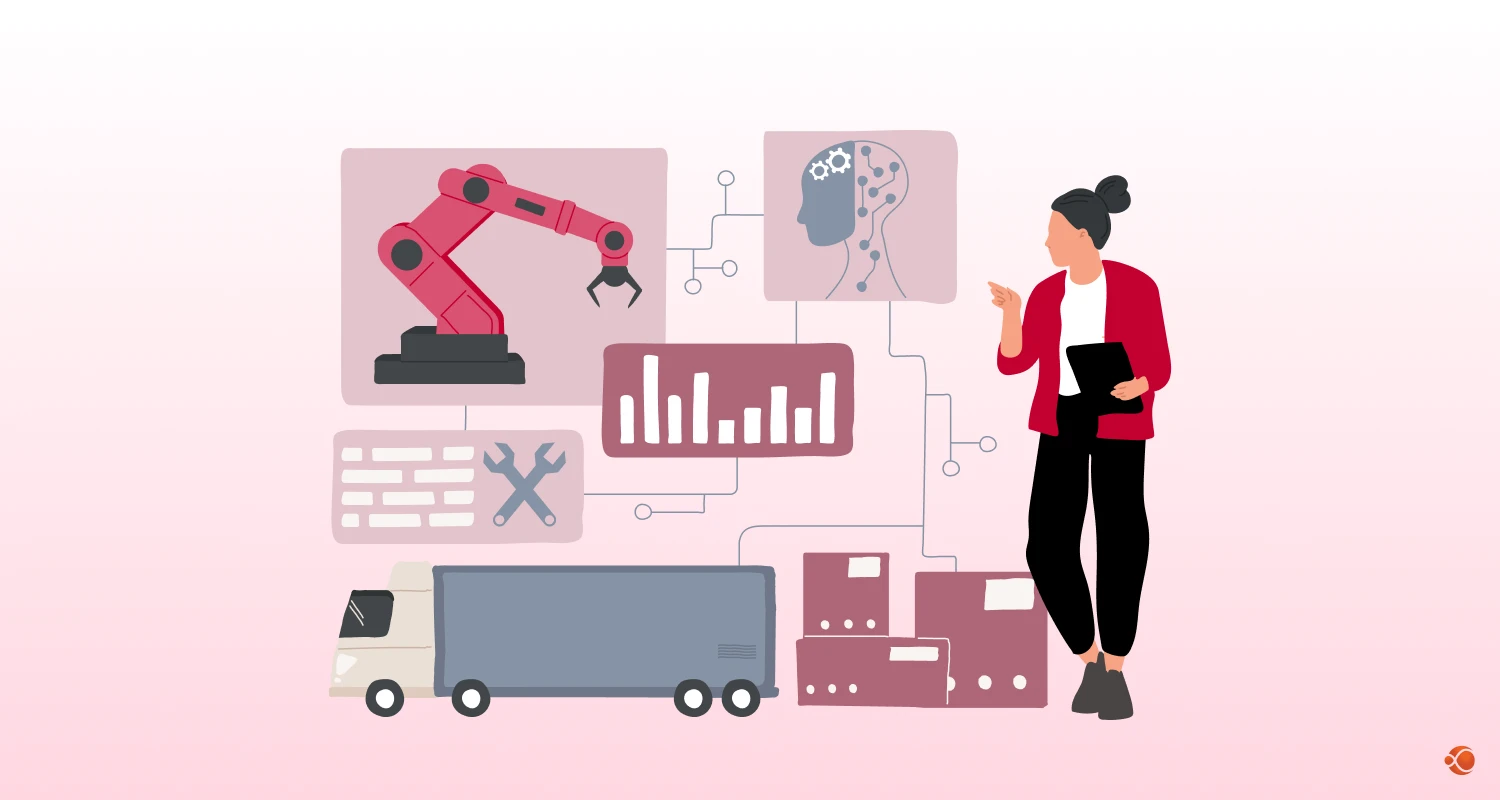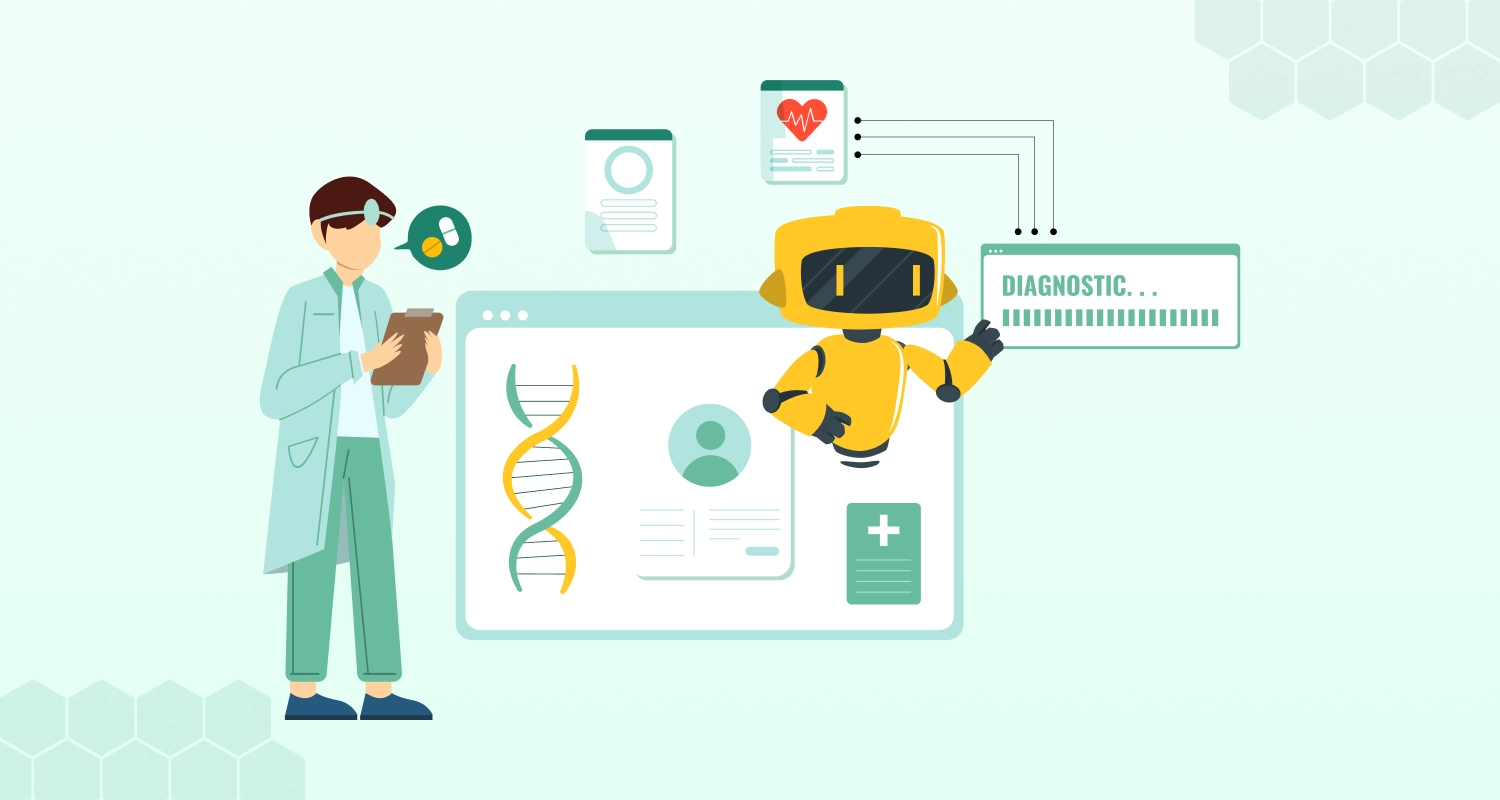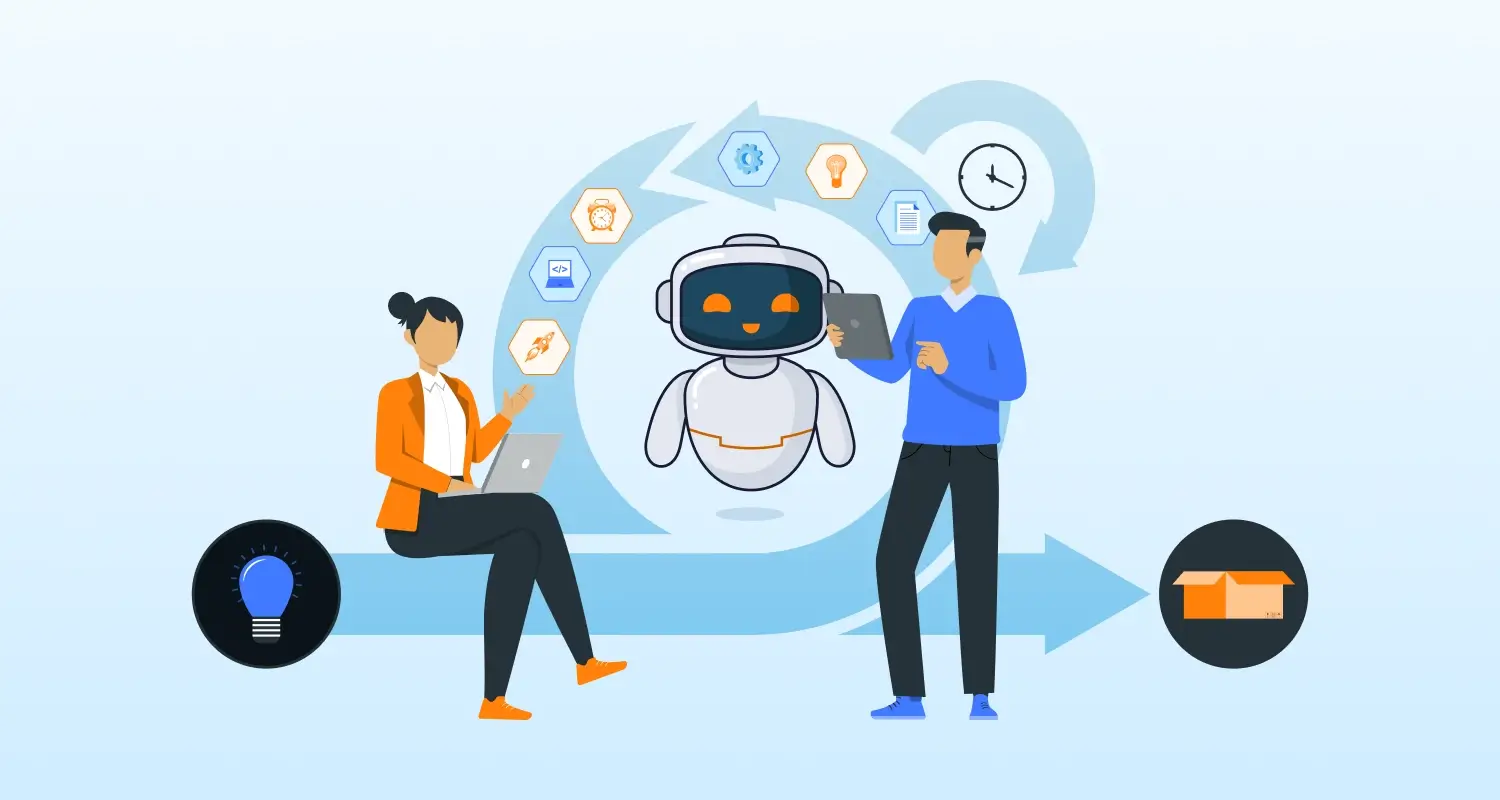Modern businesses face mounting pressure to deliver results faster while maintaining quality standards. Traditional software solutions face challenges with lengthy installation processes, expensive hardware requirements, and complex maintenance schedules.
To overcome these challenges, SaaS applications were the perfect contenders. They offer cloud-based solutions that streamline operations.
According to Gartner, worldwide public cloud end-user spending reached $591 billion in 2023, with SaaS representing the largest segment. This explosive growth reflects how organizations recognize SaaS as essential for competitive advantage.
Understanding SaaS Applications and Their Core Benefits
Through effective SaaS applications, users can get desktop software like power and features on the net, removing the need to manually install software. All users can access the platform from any browser-supporting device, eliminating the need to meet certain software/hardware standards.
It is one of the most accessible and collaboration friendly tools that works across different time zones and locations. Updates happen automatically, ensuring everyone uses the latest features without disruption. Cost efficiency becomes apparent as businesses avoid expensive hardware purchases and maintenance contracts.
Key Productivity Features of SaaS Solutions
Instant Deployment
It can take weeks or months to deploy traditional software whereas SaaS apps can be set up and deployed within hours.
Automatic Updates
Software patches and feature advances deploy automatically. IT teams get to focus on strategic initiatives instead of routine maintenance tasks.
Scalable Resources
Organizations adjust usage based on current needs. Seasonal businesses scale up during peak periods and scale down afterward without wasting resources.
Enhanced Collaboration
Real-time document sharing and communication tools break down silos between departments and geographic locations.
Industry-Specific SaaS Applications and Their Impact
Healthcare: Transforming Patient Care and Operations
Healthcare organizations handle sensitive patient data while maintaining strict compliance requirements. Healthcare software development companies provide specialized solutions that address these unique challenges while improving operational efficiency.
Electronic Health Records (EHR) Systems
Electronic Health Records (EHR) systems streamline patient information management. Medical professionals can access detailed patient histories instantly. This helps improve quality and accuracy of the diagnosis, improving the overall treatment outcomes. Telemedicine platforms expanded healthcare access, particularly in rural areas where specialist availability remains limited.
Practice Management Solutions
Healthcare practice management solutions provided by healthcare SaaS company automates appointment scheduling, billing processes, and insurance claim submissions. Administrative staff is able to spend more time on patient care without worrying about paperwork.
Manufacturing: Optimizing Production and Supply Chain
Manufacturing environments require precise coordination between multiple departments, suppliers, and distribution channels. SaaS manufacturing software development services provide real-time visibility into production processes, inventory levels, and quality metrics.
Enterprise Resource Planning (ERP) Systems
Enterprise Resource Planning systems combine all business functions into unified platforms. Production managers track material flow from raw materials to finished products. Quality control teams identify defects early in the manufacturing process, reducing waste and customer complaints.
Predictive Maintenance Applications
Predictive maintenance applications analyze equipment performance data to schedule maintenance before breakdowns occur. This proactive approach reduces unexpected downtime by up to 50%, according to McKinsey & Company.
Supply Chain Management Platforms
Supply chain management platforms optimize inventory levels and vendor relationships. Procurement teams are able to make data-driven decisions about sourcing strategies.
Financial Services: Ensuring Security and Compliance
Fintech institutions are heavily regulated environments where accuracy and security are must-haves. Vertical SaaS financial software development services address specific needs within banking, insurance, and investment management sectors.
Core Banking Platforms
Core banking platforms handle transaction processing, account management, and regulatory reporting. These systems process millions of transactions on a daily basis while maintaining real-time balance updates. They also have built-in fraud detection capabilities.
Risk Management Applications
Risk management tools help keep an eye on market conditions and how portfolios are performing, so potential issues can be spotted early. This gives portfolio managers the insights they need to make better, more informed decisions while staying aligned with regulations.
Compliance Management Tools
Compliance tools take the hassle out of reporting and help businesses stay up to date with changing rules. For vertical SaaS fintech companies, this means lower compliance costs and being ready for audits—no matter where they operate.
Education: Revolutionizing Learning Experiences
Corporate training programs and educational institutes rely on eLearning software development services for online learning SaaS platform development. Higher education SaaS solutions support both traditional classroom instruction and remote learning initiatives.
Learning Management Systems (LMS)
Learning Management Systems (LMS) centralize course content, assignments, and student progress tracking. Educators create interactive lessons with multimedia content while students access materials from any device at any time.
Virtual Classroom Platforms
Virtual classroom platforms enable real-time instruction with features like screen sharing, breakout rooms, and interactive whiteboards. This technology proved essential during global disruptions and continues supporting hybrid learning models.
Student Information Systems
Student information systems streamline enrollment processes, grade management, and communication between faculty, students, and parents. Administrative efficiency improves while providing better service to the educational community.
Hospitality: Enhancing Guest Experiences
Hotels, restaurants, and travel companies use hospitality SaaS software to enhance guest experiences while optimizing operational efficiency.
Property Management Systems
Property management systems handle reservations, room assignments, and guest services from unified platforms.
Point-of-Sale Integration
Point-of-sale systems in restaurants integrate with inventory management and staff scheduling applications. Managers track food costs, monitor waste, and optimize menu pricing based on real-time data analysis.
Customer Relationship Management (CRM)
Customer relationship management (CRM) platforms help hospitality businesses personalize guest experiences and build long-term loyalty. Marketing automation tools send targeted promotions based on guest preferences and booking history.
Real-World SaaS Applications Across Industries
| Industry | Popular SaaS Applications | Use Case / Primary Benefits |
| Healthcare | AthenaHealth, Epic Systems, Teladoc Health | EHR management, telemedicine services, patient scheduling, and compliance tracking |
| Manufacturing | Oracle NetSuite, Katana, Plex Systems | Real-time inventory tracking, ERP integration, predictive maintenance |
| Finance | QuickBooks Online, Xero, SAP Concur, FIS Global | Accounting automation, risk analysis, compliance management, real-time financial reporting |
| Retail & E-commerce | Shopify, BigCommerce, Square POS, Lightspeed | Online store management, payment processing, POS integration, inventory tracking |
| Education | Google Classroom, Blackboard, Canvas, Moodle | Virtual classrooms, content delivery, grading systems, progress tracking |
| Hospitality | Cloudbeds, Rezdy, Toast POS | Property management, online bookings, CRM for guest experience, inventory & staff scheduling |
| Real Estate | Buildium, AppFolio, Zillow Rental Manager | Tenant management, online payments, maintenance tracking |
| Logistics & Transportation | Fleetio, KeepTruckin, Shippo, Onfleet | Fleet management, delivery optimization, real-time tracking |
| Legal Services | Clio, PracticePanther, MyCase | Case management, document automation, billing & invoicing |
| Construction | Procore, Buildertrend, CoConstruct | Project tracking, team collaboration, budgeting, contractor and vendor management |
| Marketing & Advertising | HubSpot, Mailchimp, SEMrush, Canva Pro | Campaign automation, lead nurturing, SEO analytics, design collaboration |
| Human Resources | BambooHR, Gusto, Workday, Zoho People | Onboarding, payroll, time tracking, performance management |
| Customer Support | Zendesk, Freshdesk, Intercom, Help Scout | Ticket management, live chat, self-service portals, customer feedback automation |
| IT & Software Development | GitHub, Jira, GitLab, Bitbucket, Sentry | Source control, agile project tracking, bug tracking, CI/CD pipelines |
| Media & Entertainment | Adobe Creative Cloud, Frame.io, Wistia | Video collaboration, post-production review, creative asset management |
SaaS Automation: Streamlining Business Processes
Workflow Automation Benefits
SaaS automation eliminates repetitive manual tasks that consume valuable employee time. Workflow automation tools connect different applications and trigger actions based on predefined conditions.
Marketing Automation
Marketing automation platforms nurture prospects through personalized email sequences and social media campaigns. Sales teams focus on high-value activities while automated systems handle routine follow-ups and lead qualification.
Human Resources Automation
HR teams are using automation to simplify tasks like onboarding new employees, managing performance reviews, and handling benefits. New hires can easily complete their paperwork through automated workflows, making the process smoother and more consistent—and helping companies stay compliant.
Accounting Process Automation
Automation is also transforming accounting. Tasks like processing invoices, tracking expenses, and reconciling finances are handled faster and more accurately. That frees up finance teams to focus less on manual data entry and invest more time on strategic planning and insights.
SaaS for Remote Work: Enabling Distributed Teams

Communication and Collaboration Tools
The shift toward remote work accelerated SaaS adoption as organizations needed solutions for distributed teams. SaaS for remote work encompasses communication tools, project management platforms, and collaborative workspaces.
Video Conferencing Applications
Video conferencing applications support face-to-face meetings regardless of geographic location.
Project Management Solutions
Project management tools are great assets to help teams stay on track by giving everyone a clear view of progress and how resources are being used. Managers can easily monitor deadlines and deliverables, while team members know exactly what they’re responsible for and what to focus on.
Cloud Storage and Document Management
Cloud storage makes it easy to access documents from anywhere, while keeping everything secure and up to date. Hire SaaS developers to create cloud storage with built-in version control and sharing features, remote teams can collaborate just as smoothly as if they were all in the same office.
Custom vs. Off-the-Shelf Solutions
A proficient SaaS app development company plays a crucial role in creating industry-specific solutions that address unique business challenges. When organizations hire SaaS developers, they gain access to specialized expertise in cloud architecture, security protocols, and user experience design.
SaaS Applications Implementation Best Practices
It takes careful planning and technical expertise to develop a SaaS application. Successful implementations consider scalability requirements, security protocols, and user adoption strategies from the initial design phase.
Measuring Productivity Improvements with SaaS
Key Performance Indicators
SaaS productivity improvement metrics work as a checklist that organizations can run through for quantifying the return on their technology investments. Here is a quick checklist:
Time Savings
Measure reductions in task completion times and administrative overhead. Document processing that previously took hours now completes in minutes through automation.
Error Reduction
Track decreases in data entry mistakes and process failures. Automated systems maintain consistency while reducing human errors that create rework and customer dissatisfaction.
Cost Efficiency
Check how much you save from reduced infrastructure requirements and improved resource utilization. SaaS also removes the need to buy supercomputers or specs driven hardware which again reduces or eliminates the need of having dedicated IT support and pay their overheads.

Challenges and Considerations to Keep in Mind
Data Security Concerns
While SaaS applications offer important benefits, organizations need to address potential challenges during implementation. Data security is needed for careful vendor evaluation and robust access controls.
Integration Complexity
Integration complexity can create obstacles when connecting SaaS applications with existing systems. Successful implementations are achieved with thorough planning and technical expertise.
Change Management Requirements
Change management becomes critical as employees adapt to new workflows and interfaces. Training programs and support resources help teams maximize the value of their SaaS investments.
Future Trends in SaaS Productivity
AI and Machine Learning Integration
AI and ML integration is becoming standard features in SaaS platforms. These technologies give predictive insights and automate complex decision-making processes.
SaaS in Industry Solutions Evolution
Industry-specific solutions continue evolving to address specialized requirements. Vertical SaaS providers develop deep expertise in particular sectors, offering more targeted functionality than general-purpose applications.
Mobile-First Design Approach
Following mobile-first design for SaaS application development ensures your system works as intended on different devices. Remote work trends drive demand for applications that function seamlessly across all device types.
Final Words
SaaS applications can help organizations across different industries to redefine and improve their operational costs, processes, collaboration between teams and making their information more accessible. All it takes is finding the right SaaS platform for the right use case, or building a custom SaaS application from scratch with the help of dedicated SaaS app developers.
FAQs on How to Build SaaS Applications
What are SaaS Applications?
SaaS (Software as a Service) applications are cloud-based software programs that users access through web browsers or mobile apps without installing anything locally. These applications run on remote servers and are maintained by the service provider. Examples include Gmail, Salesforce, Slack, and Microsoft 365.
How Do SaaS Solutions Boost Productivity?
SaaS solutions enable real-time collaboration from anywhere with internet access, allowing teams to work together seamlessly across locations. They eliminate time spent on software installation, updates, and maintenance, letting users focus on core tasks. Features like automated workflows, integrations, and instant access to data streamline business processes significantly.
What Are the Cost Advantages of SaaS?
SaaS eliminates upfront hardware and software licensing costs, replacing them with predictable monthly or annual subscription fees. Companies save on IT infrastructure, maintenance, and dedicated technical staff since the provider handles all backend operations. This pay-as-you-use model allows businesses to scale costs with their actual usage and needs.
Which Industries Benefit the Most From SaaS?
Healthcare, finance, retail, and education see substantial benefits due to their need for secure data management and compliance features. Small to medium businesses across all sectors particularly benefit since SaaS provides enterprise-level capabilities without massive IT investments. Remote-heavy industries like consulting, marketing agencies, and tech companies leverage SaaS for distributed team collaboration.
Is SaaS Scalable for Growing Businesses?
SaaS platforms are inherently designed for scalability, allowing businesses to easily add or remove users, features, and storage capacity as needed. Most providers offer tiered pricing plans that grow with the business, from startup to enterprise levels. The cloud infrastructure automatically handles increased demand without requiring businesses to invest in additional hardware or technical resources.







